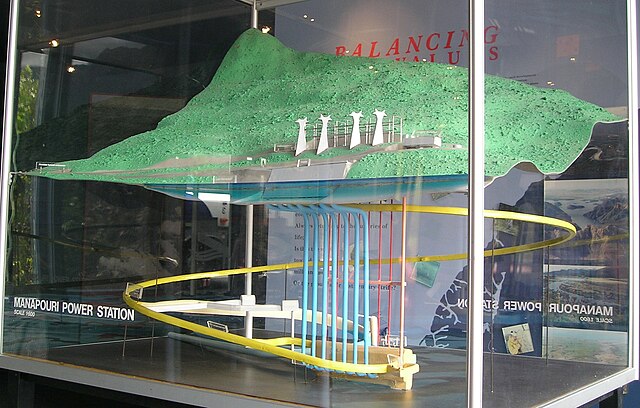Manapōuri Power Station is an underground hydroelectric power station on the western arm of Lake Manapouri in Fiordland National Park, in the South Island of New Zealand. At 854 MW installed capacity, it is the largest hydroelectric power station in New Zealand, and the second largest power station in New Zealand. The station is noted for the controversy and environmental protests by the Save Manapouri Campaign against raising the level of Lake Manapouri to increase the station's hydraulic head, which galvanised New Zealanders and was one of the foundations of the New Zealand environmental movement.
A 1:600 scale model of the Manapōuri Power Station showing the pipes (blue) which transport water from the lake to the generators, and the vehicle tunnel (yellow) accessing the turbine hall
Switchyard and water intake of Manapōuri Power Station, January 2016
Generators and exciters on the machine floor, prior to refurbishment
Photograph showing the turbine hall in October 2006, whilst the power station was undergoing a mid-life refurbishment. Shown on the lower right are two of the Francis Turbine rotors which are ready to be installed in the generators
Underground power station
An underground power station is a type of hydroelectric power station constructed by excavating the major components from rock, rather than the more common surface-based construction methods.
Inside the Robert-Bourassa generating station, in northern Quebec, the world's largest underground power station, with an installed capacity of 5,616 MW.





